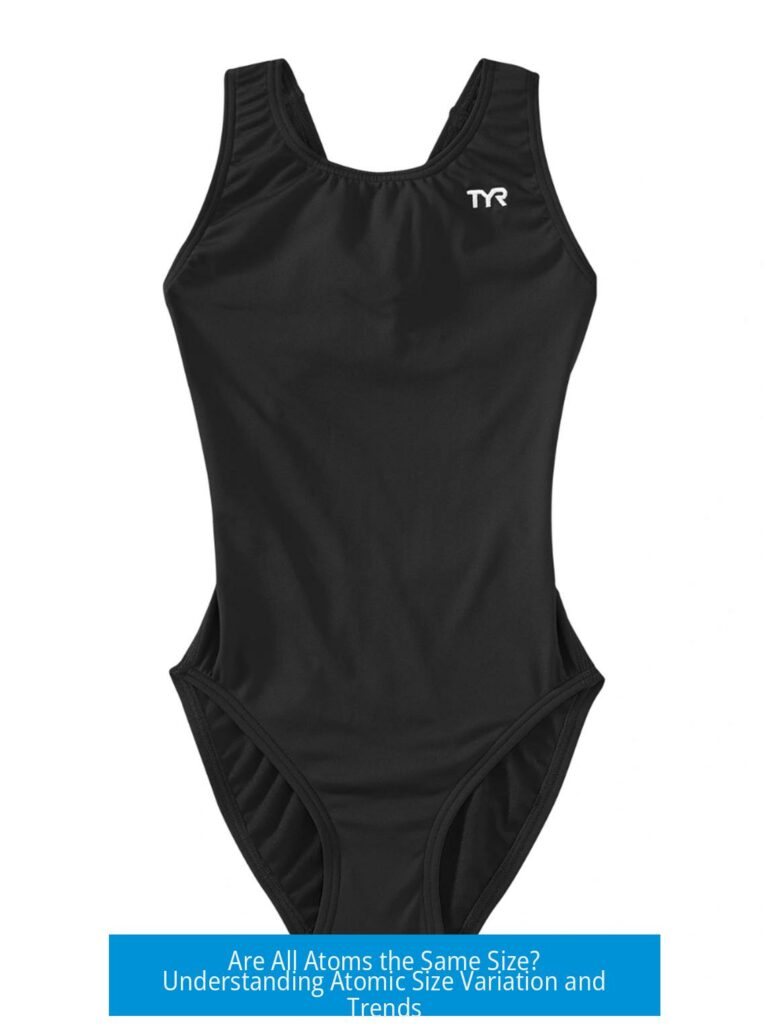What Model Kit Should I Get for Organic Chemistry?
Choosing the right molecular model kit for organic chemistry depends largely on your budget, learning style, and course requirements. Popular options include the Orbit Skeletal Set from Cochranes of Oxford, MolyMod brands, and several commercially available kits like the Happy Atoms Magnetic Set and Old Nobby Organic Chemistry Model Kit. These kits facilitate visualization of structures, aiding understanding and exam preparation. Your choice should balance affordability, ease of use, and the ability to clearly represent organic molecules.
Why Use a Molecular Model Kit for Organic Chemistry?

Organic chemistry involves complex molecular structures and bonding patterns. Using a model kit offers tangible visualization of:
- Molecular geometries
- Bond angles and types (single, double, triple bonds)
- Stereochemistry aspects such as chirality
- Functional groups and their spatial arrangements
This hands-on approach helps students grasp abstract concepts that can be difficult through text or 2D diagrams alone. It also supports studying for exams, where mental visualization is key. Many instructors encourage using these kits during homework and tests.
Considerations When Choosing a Model Kit
A few essential factors influence the choice of an organic chemistry model kit:
- Affordability: Costs vary from under $30 to over $100.
- Portability: Smaller kits are easier to carry for study sessions and exams.
- Coverage: Ability to represent a wide range of molecules and functional groups.
- Ease of Assembly: Kits with magnetic or snap-together parts speed up building models.
- Durability: Sturdy materials withstand repeated use over semesters.
Popular Organic Chemistry Model Kits and Their Features
1. Orbit Skeletal Set (Cochranes of Oxford)
This model kit is favorite among students given by professors. It emphasizes minimalism and ease of manipulation, allowing quick assembly of skeletal structures. The set’s atoms are smaller and less bulky, making it easier to visualize the overall structure.
Advantages include:
- Simple to build and take apart
- Compact design suited for exam settings
- Widely accepted in academic settings
Some report that other brands’ models are clunkier with oversized atoms, reducing clarity.
2. MolyMod Model Kits

MolyMod is a well-established brand valued for quality and accuracy. They provide a range of sets from beginner to advanced levels. The models typically use realistic atom sizes and flexible parts to show rotations and bond angles.
Pros include:
- Detailed and anatomically accurate atoms and bonds
- Flexible enough to model complex rings and chiral centers
- Researchers and professors often endorse them
Downsides are mainly the price, which can be high depending on the set.
3. Happy Atoms Magnetic Molecular Modeling Set
Happy Atoms is an innovative magnetic model system. It includes color-coded atoms with printed element symbols and is highly flexible, capable of building over 17,500 molecules.
Key features:
- Magnetic connections make building and dismantling quick and simple
- Good for middle school to college level
- Enhances learning with interactive smartphone app (optional)
This kit is great for visual learners and students who want to explore beyond basic organic molecules.
4. Chemistry Structure Kit
This kit targets schools and colleges, offering easy color-coded parts to represent atoms and bonds. It is helpful for teachers to demonstrate molecular geometries, bond types, and other basic chemistry concepts. While not specialized for organic chemistry solely, it works well for foundational organic studies.
5. LINKTOR Chemistry Molecular Model Kit
LINKTOR model kits are budget-friendly and portable. They are suitable for self-study and convenient for students on a tight budget or needing a travel-friendly option.
Its advantages include:
- Compact packaging
- Clear demonstration of bond angles
- Lightweight and easy to carry
6. Old Nobby Organic Chemistry Model Kit

Old Nobby kits enjoy popularity due to affordability and reliable quality. These kits are especially suitable for beginners and span up to intermediate users. They conform to universal color coding conventions.
Key benefits:
- Affordable price point
- Color codes aid quick identification of atoms
- Strong reputation among professors and students
7. Duluth Labs MM-003 Student Kit
This model kit is durable and affordable (under $30). It contains 54 atom models and 70 bonding parts made of flexible materials. Ideal for students in introductory chemistry courses up to biochemistry.
8. Atomic Architect Organic Chemistry Molecular Model Kit
Designed to make chemistry learning engaging, this kit helps users build organic compounds as well as biological models. The set simplifies complex tasks like balancing chemical equations and understanding cyclic compounds.
Comparing Model Kits: A Quick Reference Table
| Model Kit | Price Range | Best For | Key Feature |
|---|---|---|---|
| Orbit Skeletal Set | $$ – Moderate | University students, exams | Minimalistic, easy to assemble |
| MolyMod Model Kits | $$$ – Expensive | Advanced students | Detailed, flexible models |
| Happy Atoms Magnetic Set | $$$ – Moderate to high | All levels | Magnetic, extensive molecule library |
| Chemistry Structure Kit | $ – Affordable | School to university | Color-coded, basic structures |
| LINKTOR Molecular Kit | $ – Low | Budget students | Portable, simple models |
| Old Nobby Organic Kit | $ – Affordable | Beginners and intermediate | Standard color codes |
| Duluth Labs MM-003 | $ – Under $30 | Introductory to mid chemistry | Durable, flexible bonds |
| Atomic Architect Kit | $$ – Moderate | Fun learning, organic and bio | Build organic and biological models |
Additional Advice for Choosing Your Kit

Some instructors require specific kits or allow model kits in exams; always check your course requirements first. Consider how frequently you will use the kit and if portability matters. If you’re new to organic chemistry, start with an affordable, simple kit. If you want to keep a kit for multiple courses or professional use, invest in a higher-end model for durability and functionality.
Some students appreciate magnetic models for quick assembly, while others prefer detailed kits with parts that simulate molecular rotations. Trying to test how the models feel by visiting a bookstore or online video reviews may help make your decision.
Safety Considerations
Molecular model kits themselves pose minimal safety risk. However, organic chemistry labs require personal protective equipment like gloves and goggles. When selecting a model set, prioritize kits that do not have choking hazards if purchased for young learners. Also, avoid excessively small pieces that can be easily lost or cause frustration.
Summary of Key Points
- Choose a model kit based on your budget, course requirements, and personal preference.
- Orbit Skeletal Set and MolyMod are highly regarded in academics for organic chemistry.
- Affordable kits like LINKTOR and Old Nobby work well for beginners.
- Happy Atoms Magnetic Set offers versatility and ease of building diverse molecules.
- Model kits enhance understanding of 3D molecular structures and stereochemistry.
- Verify if your professor requires or recommends a specific brand before purchasing.
- Consider durability and portability for frequent use and exam preparation.
What Model Kit Should I Get for Organic Chemistry?
If you want to ace organic chemistry, you need a model kit that fits your budget, study style, and makes complex molecular structures less of a headache. Let’s dive into the world of model kits—because yes, choosing the right one is a tiny chemistry adventure of its own.
Organic chemistry can seem like an endless jungle of atoms and bonds. Visual aids are not just nice-to-have; they are essential. So, what model kit should you get for organic chemistry? The answer depends on your budget, learning goals, and whether you want something sleek or super detailed.
Budget vs. Brilliance: Get What You Can Afford

Not all model kits are created equal—or priced equally. Some kits, like the “HGS” models, come with a heftier price tag but offer quality that might justify the splurge. If you’re tight on cash, don’t fret. Affordable options exist and can still make those tricky molecules crystal clear. Remember, these kits exist to help you visualize molecular structures, not to win a beauty contest.
Spend wisely! Your best model is the one you’ll use consistently. Too complex? You won’t reach for it. Too flimsy? It might flop before the semester ends.
The Minimalist’s Champion: Orbit Skeletal Set
Here’s a secret from someone who’s been through it: my organic chemistry professor handed me an Orbit Skeletal Set by Cochnanes of Oxford molecular models. This set carried me through Organic Chemistry I with a proud “A” and saved me hours of sketching and re-sketching molecular structures.
Why did I like it? It’s minimalistic. No bulky, clunky atoms getting in your way. The pieces are easy to assemble quickly. During exams, these models even made cameo appearances—I could bring mine to demonstrate structures visually, which was a big help.
Some classmates had different sets that seemed like a tangled ball of blobs with oversized atoms. While this might appeal visually in some ways, the simplicity of the Orbit set lets you focus on the big chemical picture instead of fumbling with parts.
Different professors have different attitudes. Some won’t insist on kits, but often, they bring theirs to classrooms or videos to demo concepts because large models help everyone see better. Ultimately, you’re the best judge based on how your brain prefers to learn.
The Classic Reliable: Molymod Model Kits
If you want a touch of tradition mixed with quality, Molymod kits are well-regarded by students and educators alike. I picked up some back in school, and I still swear by them. Sure, prices can climb depending on the particular set you choose, but the feeling of snapping atoms and bonds together into real 3D models makes organic chemistry come alive.
There are cheaper knock-offs like “Old Knobby,” which might save you cash, but often you get what you pay for: build quality, durability, and seamless connection matter when you’re fiddling with models late into the night.
Wide-Ranging Options: What else is out there?
Let’s name-drop some solid contenders worth considering for various budgets and experience levels:
- Happy Atoms Magnetic Molecular Modeling Set: The *undisputed* best for flexibility and features. It’s magnetic, quick to assemble, and supports building over 17,000 different molecules. Low age limit? 10 years, making it a great starter kit for curious young learners, too.
- Chemistry Structure Kit: Teaching the “shape” of molecules and bonds through color-coded atoms. It hands your brain that visual edge to remember molecular geometries easily.
- LINKTOR Chemistry Molecular Model Kit: Best for tight budgets and portability. Perfect for students who want something easy-to-carry for class or study groups.
- Molymod MMS-009 Student Set: A classic brand with a great reputation for university-level organic and inorganic chemistry study.
- Old Nobby Organic Chemistry Model Kit: This one strikes a perfect balance between affordability and quality, ideal for beginners and advanced students. Color-coded parts follow universal standards, easing learning.
- Duluth Labs MM-003 Student Kit: Durable, fun, and under $30. It offers 54 atom models and 70 bonding parts that are flexible and user-friendly. Great for entry-level college courses.
- Atomic Architect Organic Chemistry Molecular Model Kit: Designed to make chemistry fun, this kit helps in building organic structures, cyclic compounds, and balancing chemical equations.
What Makes a Molecular Model Kit Worth It?

Will one model kit make your chemistry grades skyrocket? Maybe not alone. But these kits bring abstract lessons into your hands and eyes. With model kits, students see how atoms connect, how bonds orient, and how molecules twist and turn.
Many find these kits do more than help pass tests—they make organic chemistry fun. If you are that student who loves to tinker, this could be your best study buddy.
Think about it: chemistry isn’t just about regurgitating formulas. It’s about understanding dynamic interactions at the molecular level. Physical models add a thousand times more clarity than 2D pictures.
Safety First: Yes, Even with Models
While model kits don’t involve chemicals, keep in mind the context of organic chemistry classes: they often include dangerous substances. Some model kits now include safety gear like gloves and goggles as extras encouraging safe lab habits.
Choose kits promoted by your instructors, or ask them for recommendations. The right kit fits seamlessly into your learning environment without adding any risk.
Final Thoughts: Which Model Kit Will You Choose?
Choosing the right model kit boils down to preferences:
- Do you want something simple and minimalistic like the Orbit Skeletal Set?
- Prefer a traditional and well-loved brand like Molymod?
- Or are you aiming for the latest and greatest with the Happy Atoms Magnetic Set?
Budget-wise? If money is tight, kits like LINKTOR and Duluth Labs offer excellent value without skimping on quality.
Want to gift a set or pass one on later? Most kits are built to last, and passing it to a fellow student is both generous and practical.
Here’s a crucial question to consider: Do you want a kit that prioritizes ease of assembly, portability, or the ability to build tens of thousands of molecules? Your answer will steer you toward the best fit.
One last tip: If possible, try handling different kits before buying. Schools might have demo models, or you could spot peers’ kits in class. You can get a feel for what suits your style—because nobody wants to wrestle with a bulky model during finals week.
At the intersection of your budget, course requirements, and learning preferences, the right model kit awaits. The key is to pick one that helps you understand molecules, not get lost in the pieces.
Remember, the best model kit is the one that makes you look at organic chemistry and think, “Hey, I can totally see how this works!”
What model kit is best for beginners in organic chemistry?
The Old Nobby Organic Chemistry Model Kit is a great start. It’s affordable, color-coded, and useful from Grade 7 through advanced levels. This kit helps beginners grasp organic and inorganic structures clearly.
Are magnetic model kits worth the extra cost?
Yes. The Happy Atoms Magnetic Molecular Modeling Set is highly recommended for its fast assembly and flexibility. It lets you build over 17,500 molecules and uses magnets for easy connections.
Which kit is best for quick assembly and classroom use?
The Orbit Skeletal Set from Cochnanes of Oxford is minimalistic and easy to manipulate. It’s favored for quick assembly and exam use, making it popular in many organic chemistry courses.
Is there a recommended affordable model kit for students on a budget?
The LINKTOR Chemistry Molecular Model Kit offers good portability and is budget-friendly. It clearly shows molecular bonds and angles, making it ideal for self-study and teaching.
How do I choose a model kit based on my needs?
Choose based on budget, kit features, and how you plan to use it. Some kits focus on durability and detail, while others prioritize ease and speed. Personal preference plays a large role here.





Leave a Comment